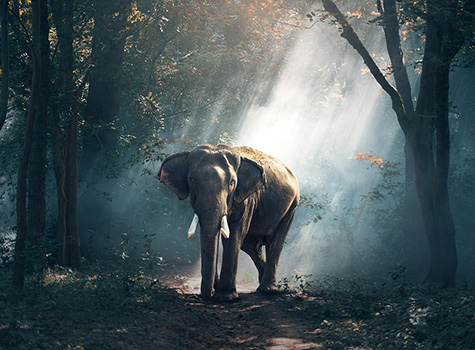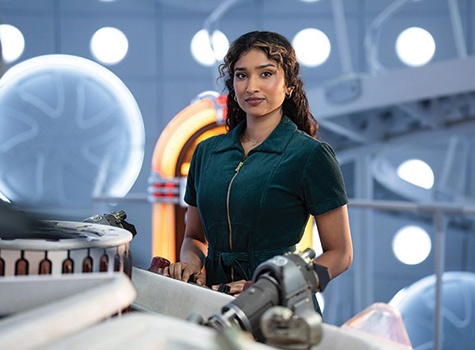By Jennifer Allen
So it seems that even in the realms of Science Fiction and Fantasy, having a woman play a key role as the lead protagonist was a relatively rare thing. Sure we had a few exceptions such as Lt. Ellen Ripley in the Alien franchise (though the role was originally written for a man). However, in a genre that was created specifically to break the rules, female characters still had to fight for their right to lead.
While I have praised actresses like Carrie Fisher (Princess Leia) and Nichelle Nichols (Lieutenant Uhura) for their performances as strong characters, they were still not the main focus within the narrative they were a part of.
With all of this in mind I will say that one of the first stories that I remember with a strong woman was the gothic horror novella, The Turning of the Screw by Henry James. Whether the Governess in the novel is sane or not throughout the story isn’t the issue. The point has always been her steadfast personality when dealing with many of the other characters in the story. She wasn’t there to be someone’s love interest, sidekick, or comic relief. She dealt with the events of the novella on her own, even though the ending is not the outcome she ultimately wanted.
While books have toyed with having a complex female hero (or villain) for years, the film and TV industry had very rarely been brave enough to go down that route. Princess Yuki from Hidden Fortress (which would later greatly influence Star Wars: A New Hope) was quite a strong character for 1950’s Japanese Cinema. Mary Poppins was one of the first Western films to successfully pull this off mostly because Julie Andrews has such a phenomenal presence.
The 70’s saw women’s lib taken to the small screen at least with shows like Charlie’s Angels, Wonder Woman, The Bionic Woman, and the Mary Tyler Moore Show. Granted some of these heroines were heavily sexualized to keep the shows “interesting.” The 80’s (apart from Ripley in the Aliens sequel) saw more women as tough but not quite tough enough to lead a story. If a woman did lead the story, often they were only looking for a man.
It wasn’t until the early 90’s with films like Silence of the Lambs and Thelma & Louise where the female leads had to slowly break from the mold and become the iconic heroes we all know and love.
The 1990’s and 2000’s would continue to give us amazing female characters as fully capable leads such as Xena, Zen from Chocolate, Mulan, Major Motoko Kusanagi from Ghost in the Shell, Captain Janeway from Star Trek: Voyager, Sidney Bristow from Alias, and both Yu Xiulian & Yu Jiaolong from Crouching Tiger, Hidden Dragon.
Most recently we’ve been graced by great female action stars like Angelina Jolie, Milla Jovovich, Scarlett Johannson, Zoe Saldana, Jennifer Lawrence, Emily Blunt, Evangeline Lilly, Maggie Q, Kate Beckinsale, and Charlize Theron who can certainly hold their own against their male counterparts.
Basically… a female led storyline is not in any way a new concept.
However, for some reason in 2016 and 2017, the entertainment industry just now figured out that more strong women in lead roles are what we’ve wanted to see all along. But are they starting to go too far?
The new Disney-helmed series of Star Wars films (minus the Han Solo one… obviously) are focused around women as primary characters. A new Star Trek TV series was announced with a woman in the lead role. The Dr. Who franchise just announced that the 13th Doctor will (finally) be female. The overarching story in Game of Thrones has been building up with the women of the show being the only ones who manage to get things done. And of course, the Wonder Woman feature film hit theaters after years of development hell, and defied all expectations with perfect casting and a good story.
Even South Asian cinema has finally recognized that women can carry a film. Jai Gangaajal, Akira, NH10, Mardaani, Kahaani (and Kahaani 2), and Naam Shabana all have shown us that actresses in Bollywood can also be kickass. Other recent films such as Mom, Poorna, English Vinglish and Queen have showed that women don’t have to be cast solely as love interests to tell a compelling story either.
While it’s all well and good that women are now getting more prominent roles, is this being done because it’s finally time to let them shine or is it because it’s now the “in thing” to get butts in seats? Unfortunately in a world of endless sequels and remakes, I still think most of the producers in the entertainment scene are simply looking for another way to get the next multi-million dollar blockbuster.
I think while South Asian cinema is also about that next big blockbuster, some studios are finally breaking away from constantly doing the next in a long line of romance stories with brightly colored dance sequences.
We’ll just have to wait and see…



